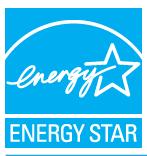
The appliances in your home that use the most energy are your heating and cooling systems. To earn the Energy Star designation, HVAC systems have to demonstrate that they use less energy under a variety of climatic conditions. The following Energy Star minimum efficiency standards apply to HVAC equipment:
Furnaces
The annual fuel utilization efficiency (AFUE) of a gas furnace must be 95 percent or higher to earn the Energy Star logo in the Northern U.S. (the minimum is 90 percent in the South). A furnace with AFUE 90 percent converts nine-tenths of its fuel into heat for your home, instead of wasting it up the chimney. The minimum AFUE stands at 78 percent, so choosing Energy Star heating appliances for our region makes sense.
Cooling Systems
Central air conditioning systems need to have a seasonal energy efficiency ratio (SEER) of 14 and higher. The minimum stands at 13, and each single increase in the SEER lowers energy consumption by 10 percent when tested in laboratory conditions.
Heat Pumps
Since these appliances also cool, they must have a SEER of 14 or higher to get the Energy Star. For heating efficiency, the heating season performance factor (HSPF) must be 8.0 or more. In our New England climate, choosing a heat pump with a higher HSPF is probably you main goal, since winter heating requires more energy than summer cooling.
Installation Factors
Unlike other appliances, how the HVAC equipment is sized and installed make a significant difference in energy costs and the system's service life. The contractor should size them using Manual J software and follow the Energy Star program for its installation.
For more information about choosing Energy Star appliances in the Route 495/128 area of Norfolk MA, please contact us at Rodenhiser Plumbing, Heating & Air Conditioning.
Images via Shutterstock.com